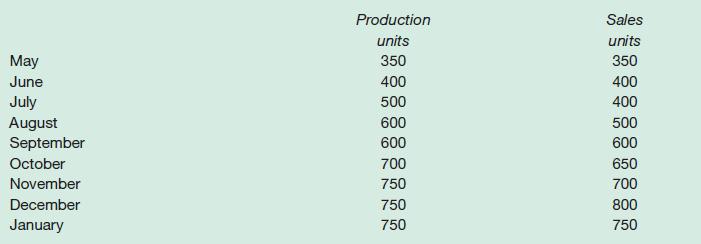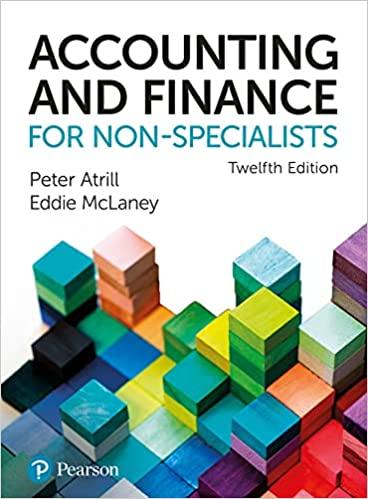Antonio Ltd has planned production and sales for the next nine months as follows: During the period,
Question:
Antonio Ltd has planned production and sales for the next nine months as follows:

During the period, the business plans to advertise so as to generate these increases in sales. Payments for advertising of £1,000 and £1,500 will be made in July and October respectively.
The selling price per unit will be £20 throughout the period. Forty per cent of sales are normally made on two months’ credit. The other 60 per cent are settled within the month of the sale.
Raw materials will be held for one month before they are taken into production. Purchases of raw materials will be on one month’s credit (buy one month, pay the next). The cost of raw materials is £8 per unit of production.
The direct labour cost will be £6 per unit of production. This is a variable cost. It will be paid in the month concerned.
Various fixed production overheads, which during the period to 30 June had run at £1,800 a month, are expected to rise to £2,000 each month from 1 July to 31 October. These are expected to rise again from 1 November to £2,400 a month and to remain at that level for the foreseeable future. These overheads include a steady £400 each month for depreciation. Overheads are planned to be paid 80 per cent in the month of production and 20 per cent in the following month.
To help to meet the planned increased production, a new item of plant will be bought and delivered in August. The cost of this item is £6,600; the contract with the supplier will specify that this will be paid in three equal amounts in September, October and November.
The business plans to hold raw materials inventories of 500 units on 1 July. The balance at the bank on the same day is planned to be £7,500.
Required:
(a) Draw up the following for the six months ending 31 December:
1. A raw materials inventories budget, showing both physical quantities and financial values.
2. A trade payables budget.
3. A cash budget.
4. A budgeted income statement for the month of May.
(b) The cash budget reveals a potential cash deficiency during October and November. Can you suggest any ways in which a modification of plans could overcome this problem?
(c) Calculate the actual profit for May and reconcile it with the budgeted profit for the month calculated in (a) (4), above. The reconciliation should include the following variances:
- Sales volume;
Sales price;
Direct materials;
Direct labour; and
Fixed overheads.
The following information is relevant:
During May, 360 units were sold for a total of £7,400. The raw material cost was £2,810. The labour cost was
£2,250. The fixed production overheads cost was £1,830.
Step by Step Answer:

Accounting And Finance For Non Specialists
ISBN: 9781292334691
12th Edition
Authors: Peter Atrill, Eddie McLaney





